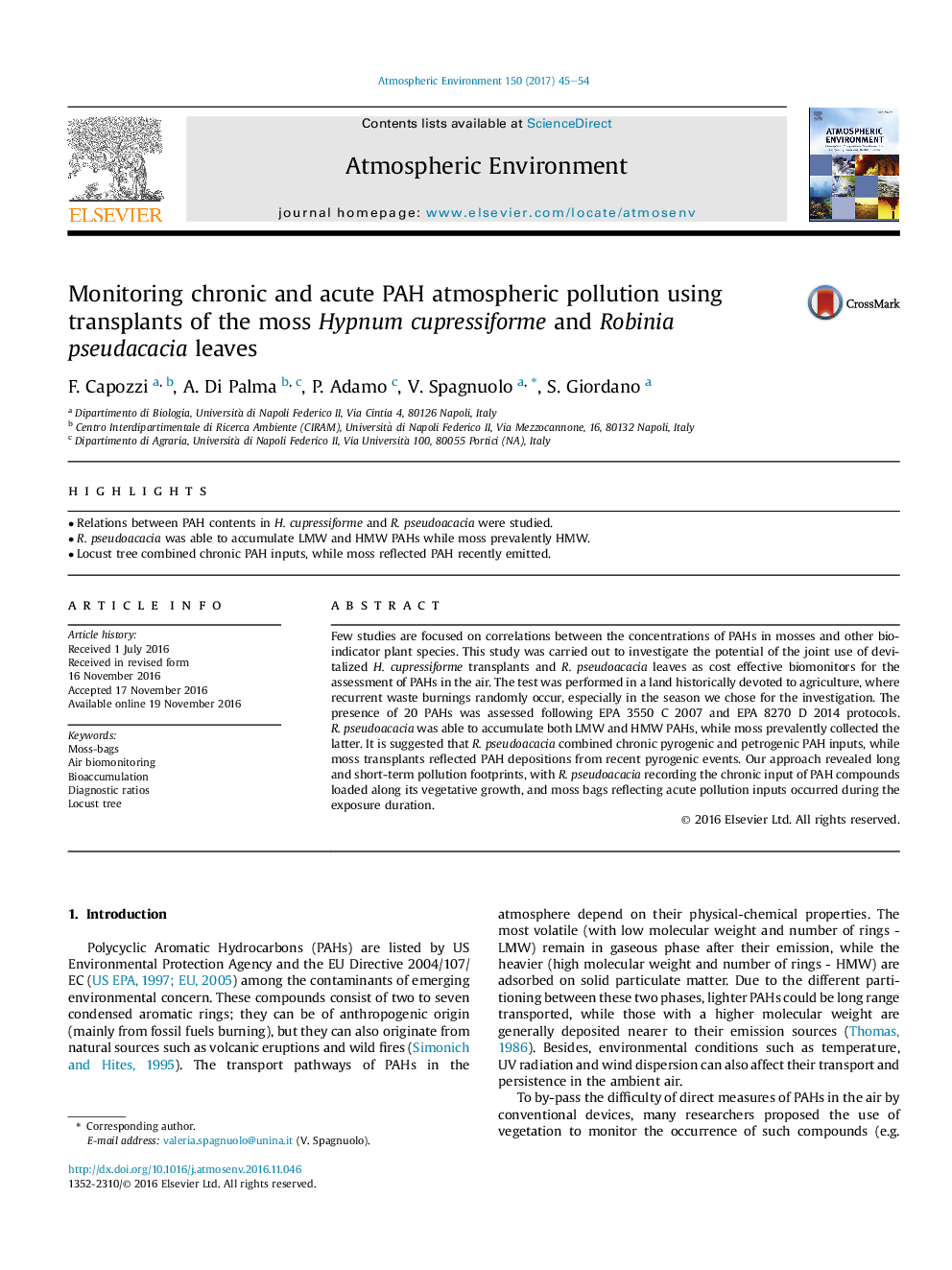| Article ID | Journal | Published Year | Pages | File Type |
|---|---|---|---|---|
| 5753444 | Atmospheric Environment | 2017 | 10 Pages |
Abstract
Few studies are focused on correlations between the concentrations of PAHs in mosses and other bioindicator plant species. This study was carried out to investigate the potential of the joint use of devitalized H. cupressiforme transplants and R. pseudoacacia leaves as cost effective biomonitors for the assessment of PAHs in the air. The test was performed in a land historically devoted to agriculture, where recurrent waste burnings randomly occur, especially in the season we chose for the investigation. The presence of 20 PAHs was assessed following EPA 3550 C 2007 and EPA 8270 D 2014 protocols. R. pseudoacacia was able to accumulate both LMW and HMW PAHs, while moss prevalently collected the latter. It is suggested that R. pseudoacacia combined chronic pyrogenic and petrogenic PAH inputs, while moss transplants reflected PAH depositions from recent pyrogenic events. Our approach revealed long and short-term pollution footprints, with R. pseudoacacia recording the chronic input of PAH compounds loaded along its vegetative growth, and moss bags reflecting acute pollution inputs occurred during the exposure duration.
Keywords
Related Topics
Physical Sciences and Engineering
Earth and Planetary Sciences
Atmospheric Science
Authors
F. Capozzi, A. Di Palma, P. Adamo, V. Spagnuolo, S. Giordano,
